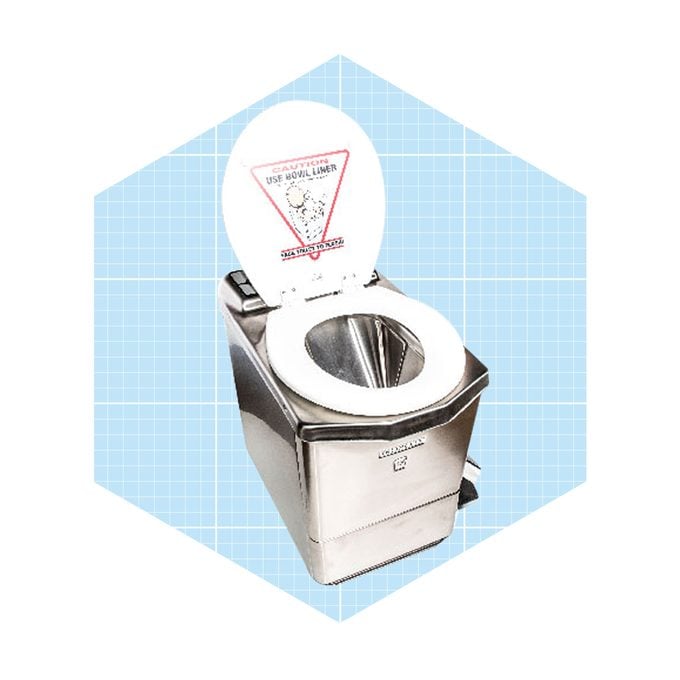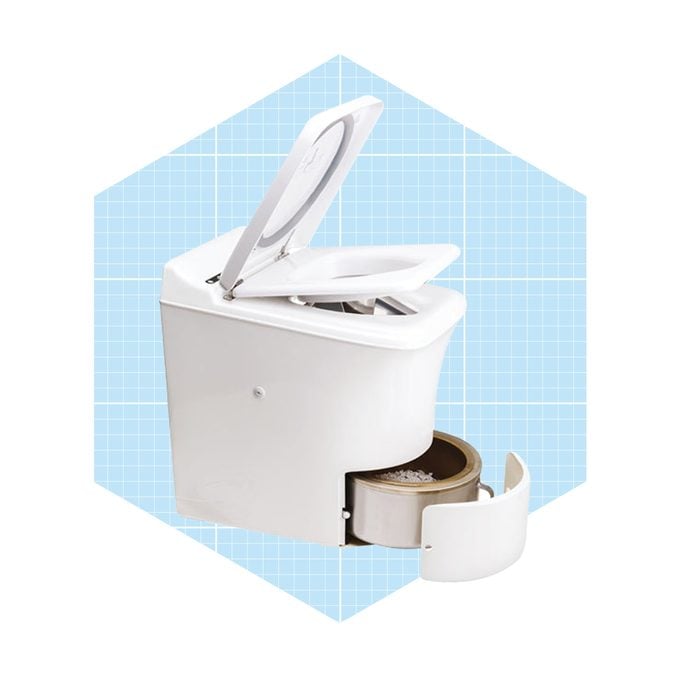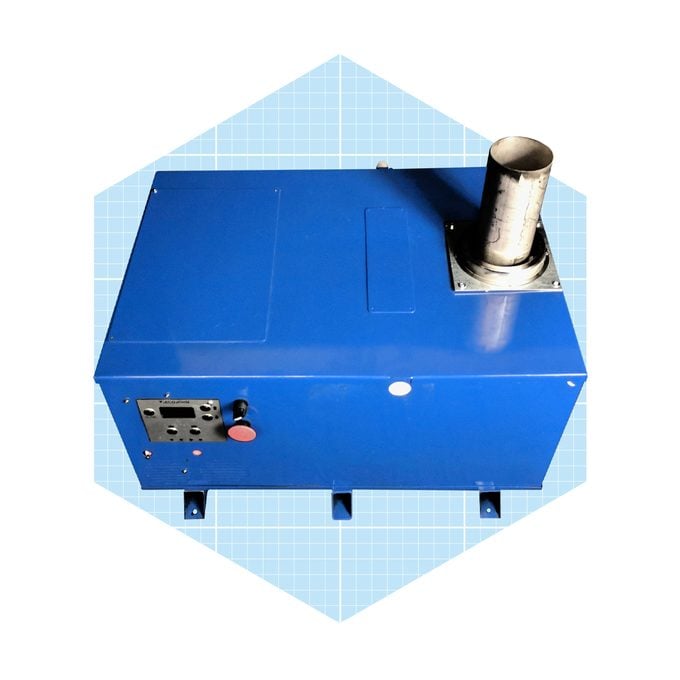When you don't know how to handle your waste, why not burn it? Incinerating toilets are designed to do just that, and they're easy to install and use.

What Is an Incinerating Toilet and How Does It Work?

How do you handle sewage when water is in short supply, or you don’t have a sewer or septic system? Homesteaders have traditionally solved this problem by installing outhouses and braving the elements when nature calls. But outhouses require extra real estate and aren’t permanent — they must be relocated when they fill up.
The three options for those who prefer to have their toilet in the house are chemical, composting and incinerating toilets. Of these, incinerating toilets are probably the cleanest.
Never heard of an incinerating toilet? Here’s what you need to know.
On This Page
What Is an Incinerating Toilet?
As the name implies, an incinerating toilet burns human waste. The most common are standalone units, but systems are also available that connect multiple toilets to a central incinerating unit.
Standalones are fueled by electricity, propane, natural gas or diesel. Typically, they incinerate waste after each use. Multiple unit incinerating systems generally switch on only when they reach a threshold amount of waste.
Incinerating toilets can handle liquid and solid waste. They exhaust odorous gases through a vent pipe which, in the best models, is fitted with a catalytic converter to “scrub” the gases and make them harmless. When used properly, incinerating toilets don’t require much cleaning, with the only maintenance periodically emptying the ash reservoir.
Incinerating toilets don’t have to be connected to a sewer, and many don’t need a water supply. So installation is simple: Drop the toilet in place, connect a vent pipe and hook it up to a power source. You plug it in, hard-wiring it or connecting it to a fuel line.
How Does an Incinerating Toilet Work?
An incinerating toilet is shaped like a regular one. A trap door at the bottom of the cone-shaped bowl opens to a waste reservoir that houses the incinerator. Some models make you first insert a cone-shaped paper liner into the bowl; others feature a small water reservoir for cleaning the bowl.
When you flush, the contents (and the liner, if there is one) fall into the reservoir or are delivered there by a screw gear. Then they’re reduced to ashes when the burn cycle begins.
A single-use produces about a teaspoon of ash, which amounts to about a cup of ash per person per week. The ash collects in a reservoir at the base of the toilet under the incineration chamber that needs to be emptied periodically, usually by simply removing a drawer. The ash is free of bacteria and pathogens and rich enough in potassium and phosphorous to double as fertilizer in the garden.
The burn cycle typically stops when someone lifts the lid. It’s reactivated by pushing the button (equivalent to flushing), making it possible for two or more people to use the toilet in succession.
Types of Incinerating Toilets
Standalone incinerating toilets differ mainly by fuel type. All need electricity, but those burning with gas or diesel only require electricity to operate the controls.
Electric
An electric incinerating toilet energizes a radiant heat element in the incinerating chamber. Each burn cycle consumes 1-1/2- to two kilowatt-hours of electricity, which at the national rate of around $0.15 per kWh amounts to $0.22 to $0.30 per flush. By contrast, according to U.S. Department of Energy estimates, water for a single flush of a conventional toilet costs around $0.015 to $0.03.
Gas and diesel
The burn chamber on an incinerating toilet fueled by propane, natural gas or diesel is typically mounted behind the unit, and waste is fed in by a screw gear. Gas units only burn waste when the reservoir is full, which takes 40 to 60 uses.
The amount of fuel used equals a five-gallon bottle of propane for approximately 1,000 uses, which amounts to $0.08 to $0.10 per flush. Units must be plugged into a 12- or 120-volt electrical circuit depending on the model to power the gears and burner.
Waste combustion system
A waste combustion system consists of multiple toilets with internal grinders connected to a central reservoir next to the incinerating unit. Each toilet uses a small amount of water to flush waste. The grinder turns it into a slurry and transfers it to the reservoir.
When the reservoir reaches a predetermined level, a pump transfers the waste to the incinerator for burning. Unlike standalone toilets, which are DIY-friendly, installation of this type requires a professional plumber.
Benefits of an Incinerating Toilet
An incinerating toilet provides a viable waste disposal method for cabins, construction sites, off-grid homes and remote camping sites. It offers these perks:
- Sanitary waste disposal using no water or a small amount;
- No plumbing required;
- Easy to install;
- Clean and odorless.
Drawbacks of an Incinerating Toilet
Because they need fueled, an incinerating toilet will add to your energy bill. Other drawbacks include:
- Difficult to clean, especially waterless ones;
- May require a ready supply of paper liners that must be replenished;
- Ash produced by burning has far fewer nutrients than compost;
- Can potentially release pollutants into the atmosphere.
Are Incinerating Toilets Legal Everywhere?
At least eight states (Massachusetts, Arkansas, Colorado, Florida, Idaho, Washington, Texas, and Montana) allow composting toilets, but offer no guidance on incinerating toilets. That doesn’t mean you can’t install one, but you’ll have to clear it with the local plumbing authorities, who have the final say on such matters.
Best Incinerating Toilets
The three best-known manufacturers of incinerating toilets are Incinolet, Cinderella and EcoJohn. All make electric and gas models. Here are three products for you to consider:

Best electric
Unlike many electric incinerating toilets, the Incinolet Model CF can be plugged into a standard 120-volt, 20-amp circuit. It can serve four people full-time and comes with 200 paper liners to get you started.

Best gas
The Cinderella Freedom hooks up to a five-gallon propane bottle and can handle three to four visits per hour. It uses 12-volt power to operate the burner and controls, so it works in places where electric service isn’t available and batteries must be used. It comes with 100 paper liners.

Best waste combustion system
The SepticJohn from EcoJohn is a whole-house system. It features a septic tank-sized reservoir that you bury, and a gas- or diesel-powered incinerator that sits above ground in the yard near the reservoir. It uses a small amount of water and, for a family of four, costs $6 to $7 per day to operate.




















